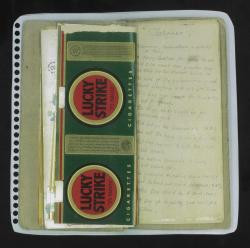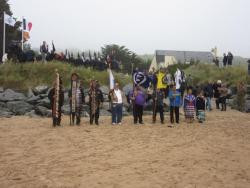Smithsonian Material Culture Forum
Smithsonian Material Culture Forum's collections
Intelligence Support for Operation OVERLORD
<p><em>Intelligence and counterintelligence played a critical role in the successful D-Day landings. German spies in Britain were captured and turned, codes were broken, operatives collected information behind enemy lines, aerial surveillance provided visibility in German troop movements and fortifications, and a successful deception campaign pointed the Germans to false landing sites. Without the accumulation of information and insight into German operations, the D-Day landing may have ended in disaster.</em><br /></p>
<p>Presenter: <strong>Gregory Elder; </strong>chief historian at the Defense Intelligence Agency (DIA) and content manager for the DIA Museum, working in collaboration with Smithsonian Exhibits</p>
<p>#112MCF<br /></p>
<p></p>
 Smithsonian Material Culture Forum
Smithsonian Material Culture Forum
4
The Magic Boxes of D-Day: How One Humble Invention Helped Make Operation Neptune Possible
<p><em>This presentation will focus on how technology can be simple but when employed in an innovative fashion, also transformative.</em></p>
<p>Presenter: <strong><strong>Frank Blazich, Jr., PhD</strong>;</strong> Lead Curator of Military History at the National Museum of American History<br /><br />#112MCF</p>
 Smithsonian Material Culture Forum
Smithsonian Material Culture Forum
37
Gratitude, Trauma and Repression: D-Day in French and American Collective Memory
<p><em>This presentation will focus on personalizing the memory of D-Day: how do memorials create official versus vernacular/local/personal memory? How does material culture inform memory? Whose responsibility is it to maintain memorials? Who gets remembered? Who gets forgotten?</em><br /></p><p>Presenter: <strong>Kate Clarke Lemay, PhD; H</strong>istorian at the National Portrait Gallery </p><p>#112MCF</p>
<p></p>
 Smithsonian Material Culture Forum
Smithsonian Material Culture Forum
4
"I Hardly Know Where to Start": Personal Narratives of D-Day within the Veterans History Project Collection, Library of Congress
<p><i>This presentation will include a discussion of two unique items--a scrapbook and a personal diary—submitted by D-Day veterans Felix Adams and Homer Hall to the Veterans History Project at the Library of Congress</i>.</p><p>Presenter: <b>Megan Harris</b> is the senior reference specialist for the Veterans History Project (VHP) of the American Folklife Center at the Library of Congress<br /><br />#112MCF</p>
 Smithsonian Material Culture Forum
Smithsonian Material Culture Forum
10
National Native American Veterans Memorial
<p><i>As part of its NMAI Veterans Memorial project research, this presentation will feature the story of Charles Norman Shay who served at Normandy and has been honored with a memorial overlooking Omaha Beach and some of the other stories of Native American service connected to D-Day.</i></p><p>Presenters: <b>Rebecca Head Trautmann</b> is a curator and researcher working with contemporary art at the National Museum of the American Indian, Smithsonian Institution.</p><p></p><p><b>Herman J. Viola, PhD</b>, curator emeritus at the National Museum of the American Indian, Smithsonian Institution, and is an authority on American Indian history and culture and the exploration of the American West,</p><p>#112MCF</p><br /><br /><p></p>
 Smithsonian Material Culture Forum
Smithsonian Material Culture Forum
5
Flak-Bait: A Story of Survival from World War II
<p><i>American aircrews flew the Martin B-26B Marauder bomber named Flak-Bait on more missions than any other American warplane during World War II, which included three times on D-Day.</i><br />Presenter: <b>Jeremy R. Kinney, PhD</b> is curator of the World War II American military aviation collection at the National Air and Space Museum.</p><p>#112MCF<br /></p><p></p>
 Smithsonian Material Culture Forum
Smithsonian Material Culture Forum
4







